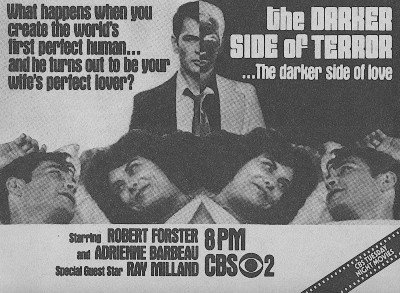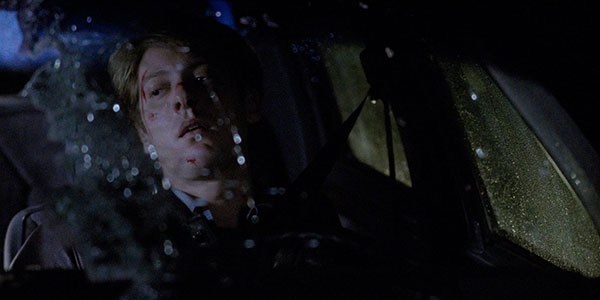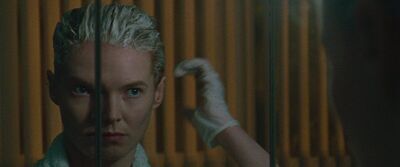Get Two Robert Forsters for the Price of One In ‘The Darker Side of Terror’
Welcome to 4:3 & Forgotten — a weekly column in which Rob Hunter and I get to look back at TV terrors that scared adults (and the kids they let watch) across the limited airwaves of the ’70s. This week’s movie is 1979’s The Darker Side of Terror.
Some of the most effective horror films exaggerate contemporary societal fears and paranoia to great effect. These social concerns are often rooted in humanity’s lack of understanding of certain topics, and scare merchant filmmakers have a tendency to paint the scenarios in a very doom and gloom manner. The Darker Side of Terror is telemovie with ideas on its mind, and it wants the viewer to consider the dangers of cloning.
When: April 3, 1979
Where: CBS
Directed by Gus Trikonis from a screenplay by Al Ramrus and John Herman Shaner, the story follows a scientist who decides to play god. After being turned down for a major promotion, an embittered Paul Corwin (Robert Forster) learns all about his mentor’s secret cloning experiments. Intrigued by the groundbreaking possibilities, Paul creates a clone version of himself… and chaos ensues.
The clone cannot be controlled. He’s also horny and spends his time visiting the discotheques, hunting co-ed students to fornicate with, and then slaughtering them later. Eventually, the clone develops the hots for Paul’s wife (Adrienne Barbeau), who ends up falling for the fake version of her husband. This is especially apparent during a scene where the clone gets into a fight and sends her passions soaring. Of course, when the real Paul learns about the clone’s transgressions, he vows to get revenge.
If all of that sounds exciting, I can assure you that it isn’t. Don’t get me wrong, The Darker Side of Terror is a serviceable by-the-book horror melodrama that’s anchored by a great performance by Forster. Unfortunately, it’s also a movie that drags in spells and doesn’t make the most of its excellent premise. The story doesn’t dig deep enough into the science to appease heady tastes. Nor does it go off the rails.

The Darker Side of Terror’s ideological leanings edge on the side of anti-science. It feeds into the fear of science going unchecked and disrupting societal values. The clone in question is a primitive homewrecker who’s essentially the antithesis of good old, God-fearing values. Much like Frankenstein, a story that The Darker Side of Terror riffs on to a degree, this is a cautionary tale about the dangers of tampering with the natural order.
One of the most interesting aspects of the movie is the way in which it ponders how clones would integrate into society. The clone’s assimilation process is the cause of some of the film’s stale melodramatic moments, but I still credit the filmmakers for asking these questions. The idea of clones evolving and learning is fascinating. Furthermore, the notion of them being better than their donors is terrifying as it ultimately makes the human race seem insignificant.
Forster is the highlight of The Darker Side of Terror, however. The script doesn’t give him a lot of meaty material to chew on, but he elevates the material with his dual performance. There’s a quiet menacing quality to his clone persona, while regular human Paul allows him to be more varied. Paul isn’t a conventional hero, and it’s his selfishness that causes the whole mess to happen. Yet Forster makes him sympathetic and brings just enough nuances to the character to keep the movie interesting in spite of its derivative love triangle subplot and flaccid horror.
The Darker Side of Terror doesn’t live up to its title. It’s too tame to be terrifying. But it’s a solid little number that will entertain fans of ’70s TV terror. Applying Frankenstein sensibilities to the topical subject of cloning was a smart idea in theory. And while the movie doesn’t do enough to incite fear and paranoia about human duplication, it might make some viewers think about the concept.
Turn the dial (okay fine just click here) for more 4:3 & Forgotten.





